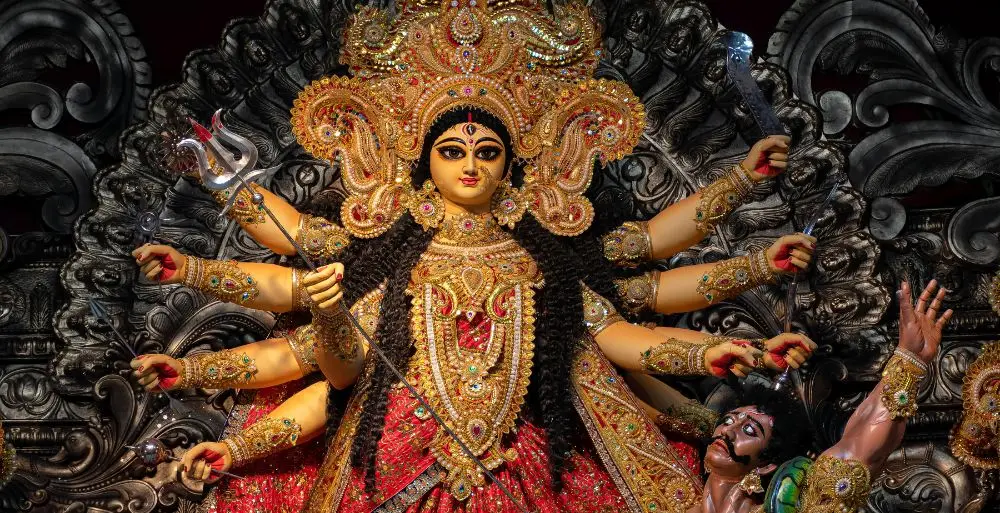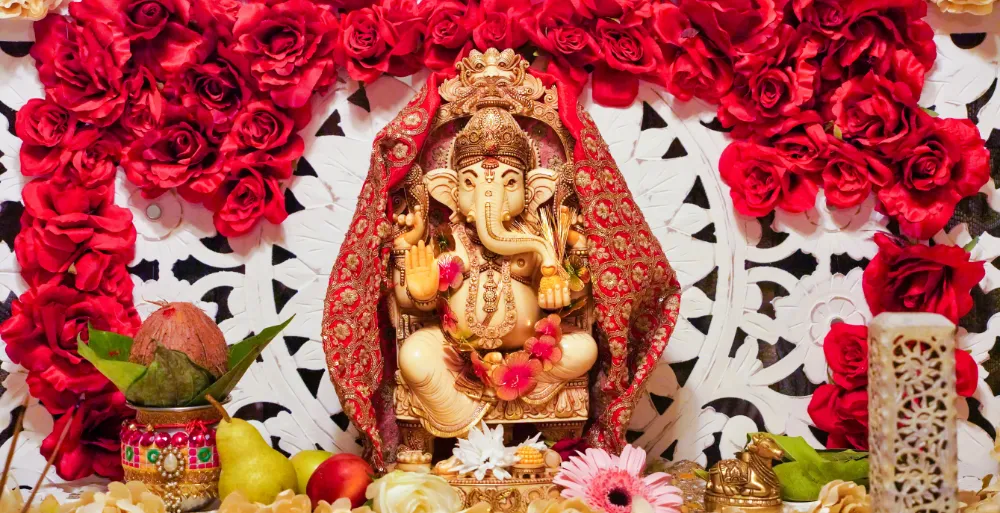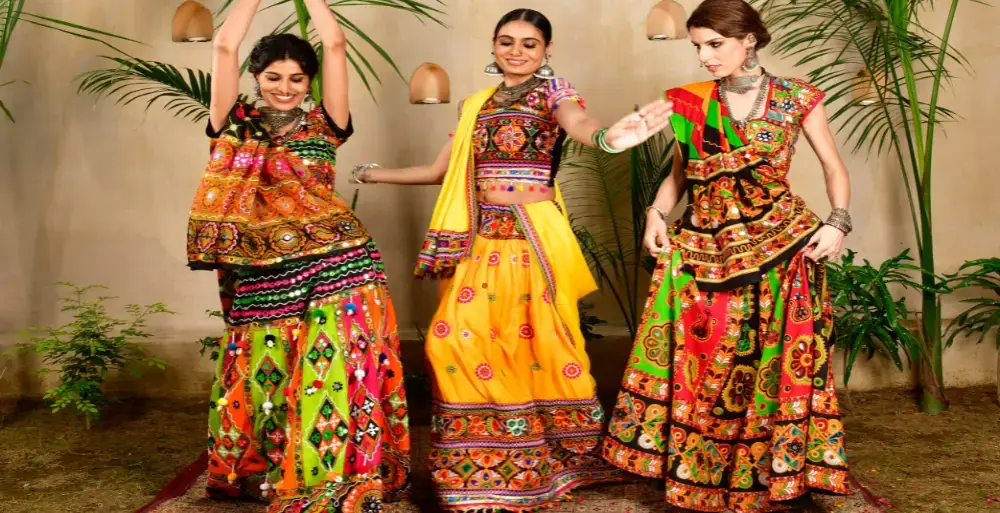Navratri is one of the most significant festivals in Hindu culture, celebrated with great excitement and devotion across India and among Hindus worldwide. Lasting for nine nights and ten days, Navratri is dedicated to the worship of Goddess Durga and her nine divine forms. Each day of Navratri holds its own importance, with specific rituals, colors, and prayers associated with the different avatars of the Goddess. The 1st day of Navratri marks the beginning of this auspicious festival and is dedicated to worshipping Goddess Shailputri, the first form of Durga.

Shardiya Navratri 2024 Date And Time
Navratri is celebrated twice a year: Chaitra Navratri in the spring and Sharad Navratri (Shardiya) in the autumn. Chaitra Navratri marks the start of the Hindu New Year and takes place in March-April, while Sharad Navratri, more widely observed, occurs in September-October.
Sharad Navratri is especially important since it precedes Dussehra and Diwali, which commemorate Goddess Durga’s victory over the demon Mahishasura. As Sharad Navratri approaches, devotees are ready to commemorate the holy feminine spirit via rituals, festivities, and vivid cultural activities. Shardiya Navratri, also known as Ashwin Navratri, will be celebrated from Thursday, 3rd October 2024, to Monday, 12th October 2024.

The Significance of the 1st Day of Navratri
The 1st day of Navratri, known as Pratipada, marks the beginning of this auspicious festival. The 1st day of Navratri is dedicated to the worship of Goddess Shailaputri as she is the first form of Goddess Durga. Her puja is performed by reciting the mantra “ॐ देवी शैलपुत्र्यै नमः॥”
The name “Shailaputri” is a combination of two Sanskrit words: “Shaila” means mountain and “Putri” means daughter. Also known as Parvati, the daughter of King Himavan, ruler of the Himalayas, she embodies the collective power of Brahma, Vishnu, and Shiva.

The Legend of Goddess Shailaputri

According to Hindu mythology, Goddess Shailaputri was born as King Himavan’s daughter in her former life as Sati. Sati was Lord Shiva’s consort, but a series of terrible events led to her self-immolation in a fire sacrifice. Her third life was as Shailaputri, and through her ardent devotion, she once again became Lord Shiva’s spouse.
Goddess Shailaputri rides a bull (Nandi) and holds a trident in one hand and a lotus in the other. Her serene and calm temperament symbolizes nature’s power and nurturing qualities. Devotees often worship her to seek stability and strength in their lives
The Spiritual Significance of 1st Day of Navratri
The 1st day of Navratri is more than just rituals and celebrations; it has deep spiritual significance. Goddess Shailaputri represents the earth element and purifies the mind and body, laying the foundation for the spiritual journey of Navratri. She symbolizes patience, devotion, and strength, and devotees seek her blessings for inner stability and tranquillity.
Worshipping Goddess Shailaputri helps devotees connect with their root chakra (Muladhara Chakra), the source of both spiritual and physical energy. By seeking her blessings, devotees hope to awaken this energy inside themselves, resulting in spiritual awakening and growth.

Rituals and Traditions of the 1st Day of Navratri
On the 1st day of Navratri, devotees perform Ghatasthapana, or Kalash Sthapana, to invoke the Goddess in a sacred pot, or Kalash. They fill the pot with water and place a coconut on top, setting it on a bed of rice symbolizing wealth and prosperity. Kalash Sthapana is done strictly at the Muhurat, or auspicious time, marking the start of the nine-day prayer period.
Begin your worship of Maa Shailputri by taking a bath and dressing cleanly. Set up the sacred space by cleaning the temple area and placing a red cloth on the altar. Put a statue or portrait of Maa Durga on the altar and begin worshipping Maa Shailputri by presenting roli (red powder), chawal (rice grains), and fresh flowers.

Devotees offer new clothing to the Goddess, followed by performing an aarti with incense sticks and a lamp. During the puja, devotees read the story of Maa Shailputri, say her mantras, and present special prasad (bhog) to seek her blessings.
Devotees also decorate their homes with flowers, rangoli, and lights to create a festive mood. Devotees perform special prayers and bhajans (devotional songs) to honor Goddess Shailaputri. On this day, many individuals fast and eat only satvik (pure) foods, such as fruits, milk, and other vegetarian cuisine free of onions and garlic. The colour of the first day is white, symbolizing peace and positivity.

When Should You Perform Ghatasthapana?
Here are the key dates and timings for Shardiya Navratri 2024:
- Ghatasthapana Date: 3rd October 2024 (Thursday)
- Ghatasthapana Timing: 6:15 AM to 7:22 AM (Duration: 1 hour, 6 minutes)
- Abhijit Muhurat Timing: 11:45 AM to 12:32 PM (Duration: 47 minutes)
- Pratipada Tithi Start: 12:18 AM, 3rd October 2024
- Pratipada Tithi End: 2:57 AM, 4th October 2024.
Maa Shailputri Puja Mantra
ऊँ देवी शैलपुत्र्यै नमः ।।
या देवी सर्वभूतेषु शैलपुत्री रूपेण संस्थिता। नमस्तस्यै, नमस्तस्यै, नमस्तस्यै नमो नम:।।
वन्दे वाञ्छितलाभाय चन्द्रार्धकृतशेखराम्। वृषारुढां शूलधरां शैलपुत्रीं यशस्विनीम्।।
Also Read: 2nd Day of Navratri: Worship Guide for Maa Brahmacharini

Maa Shailputri Aarti and Bhog
Maa Shailputri is particularly fond of offerings such as white flowers, white clothes, and sweets made from milk and sugar. Other offerings, like misri (crystallized sugar lumps) and batasha (sugar sweets), can also serve as bhog.

To appease the goddess in the evening, offer makhane ki kheer (puffed lotus seed pudding) as prasad. Devotees chant the Maa Shailputri mantra during the puja to evoke the blessings of Goddess Durga.

Benefits and Tips for a Successful Puja
Worshiping Maa Shailputri brings good fortune, prosperity, and happiness. Her puja serves as a powerful way to fulfill aspirations and overcome life’s obstacles. On the first day of Navratri, offer Maa Shailputri ghee and milk-based delicacies.
To enhance the blessings of the puja, perform the puja during the auspicious Abhijit Muhurat time. Reciting the Durga Saptashati and singing her aarti with passion and faith would add to the spiritual value of the puja.

Celebrations Across India

Different regions of India celebrate Navratri in their own ways, with the first day holding unique significance in each tradition.
- In Gujarat: The first day marks the beginning of the famous Garba and Dandiya Raas, where people come together to dance in circles, celebrating the energy of the Goddess. The vibrant dances, accompanied by traditional music, continue late into the night, reflecting the community’s devotion and joy.
- In West Bengal: The first day is known as Mahalaya, which is observed a day or two before Navratri begins. Bengalis believe that Goddess Durga descends to Earth on this day. Early morning prayers and hymns dedicated to the Goddess mark the day as devotees actively invoke her presence.
In North India: the first day of Navratri is celebrated with immense devotion. People organize Jagran (night-long vigils) and Kirtans (devotional singing) to honor the Goddess. Devotees perform the Kalash Sthapana with great reverence and begin their fasting rituals with deep faith.

Conclusion For 1st Day of Navratri:
The first day of Navratri symbolizes new beginnings, devotion, and spiritual preparation. Devotees who worship Goddess Shailaputri seek her blessings for strength, stability, and wealth. This day sets the spiritual tone for the rest of the festival, inviting devotees to immerse themselves in the celebration of Navratri’s divine feminine energy. Whether through rituals, fasting, or joyful festivities, the first day of Navratri serves as a reminder of the power of faith and the importance of beginning the path to spiritual growth with devotion and purity





